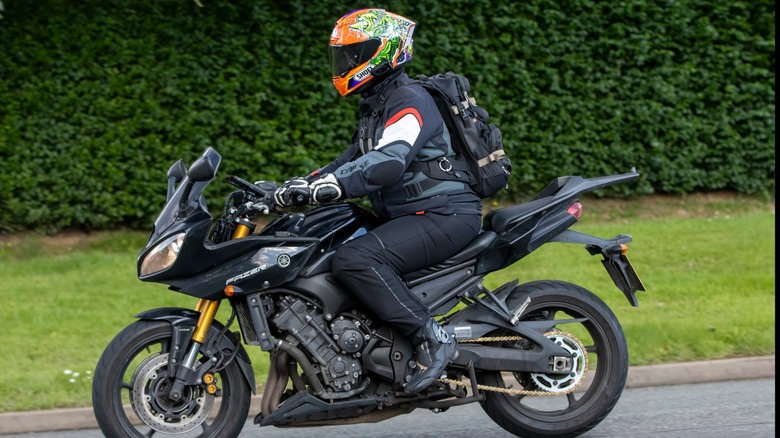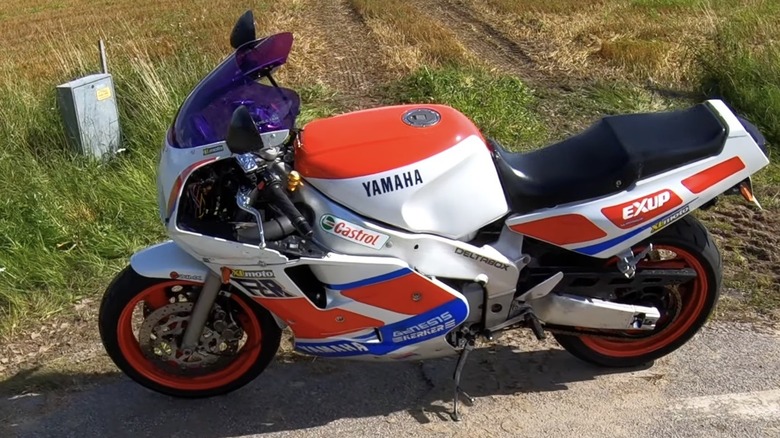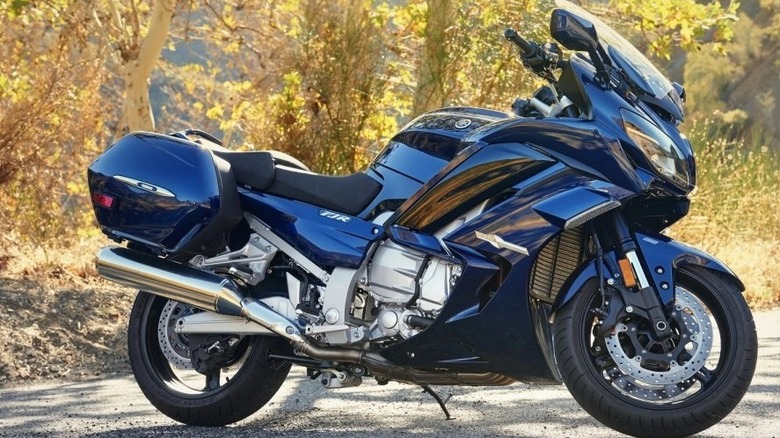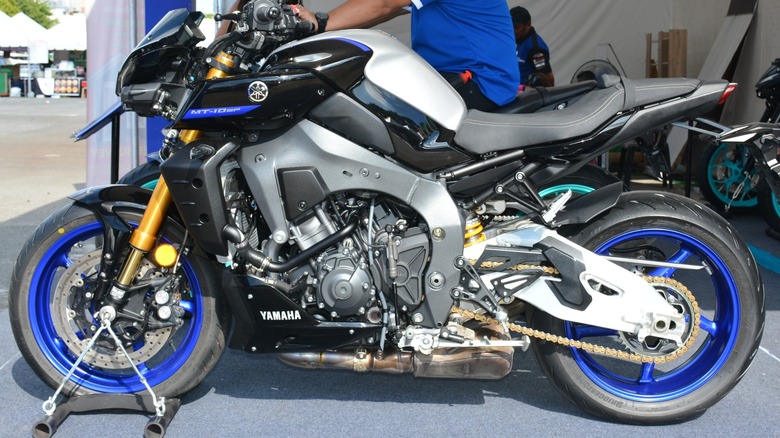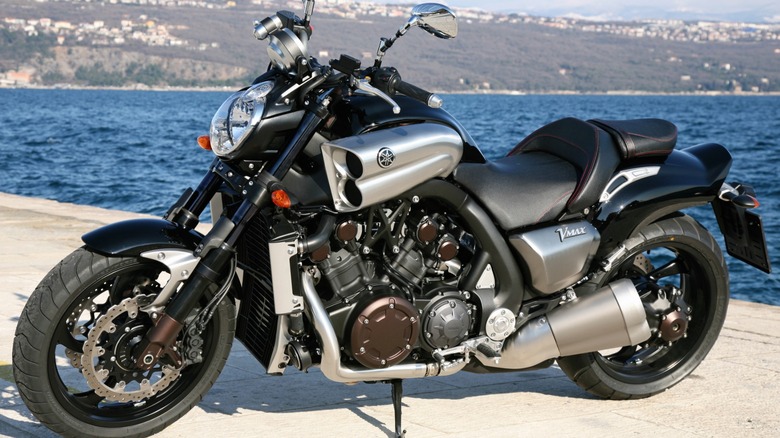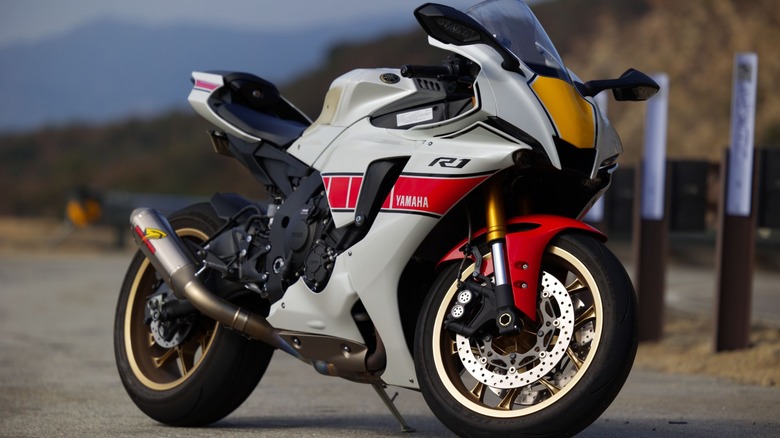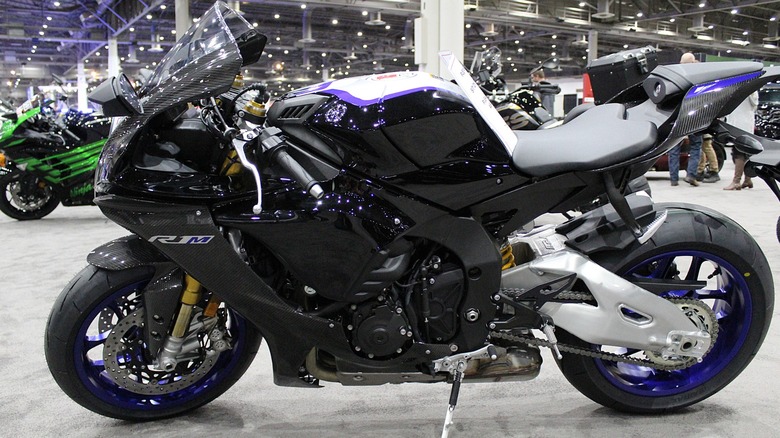6 Of The Highest Horsepower Yamaha Motorcycles Ever Made
Yamaha is a brand riders trust for fast, reliable, fun bikes. The Japanese company has always been ahead of the game in bringing new technology to riders. It introduced the crossplane crankshaft, which makes sport bikes smoother and easier to control. It also created the Niken, a cool-looking three-wheeled motorcycle, and was one of the first to adopt features like ride-by-wire throttle to improve performance.
One more thing that makes Yamaha special is that it doesn't just focus on one type of bike. Whether you want a fast R-series sport bike, a tough Ténéré adventure bike, an easy-to-ride MT naked bike, or a fast V-Max cruiser, Yamaha has a motorcycle you can likely afford.
Yamaha is also a racing legend. The company has won many MotoGP championships with famous riders like Valentino Rossi and Jorge Lorenzo. This racing DNA is evident in its production models, which makes even its street bikes exciting to ride. When it comes to speed and power, Yamaha knows how to deliver. In this article, we'll take a look at some of the most powerful motorcycles the brand has ever built.
129 hp: the FZR1000R
The Yamaha FZR1000R was a game-changer in 1989, setting performance benchmarks that influenced sport bikes' development. At its heart was a 1,002-cubic-centimeter inline-four engine, producing an impressive 129 horsepower. What made this engine special was its five-valve-per-cylinder design, with something called "Exhaust Ultimate Powervalve" that optimized airflow for high-rpm performance. This combination made the FZR1000R a powerhouse on both the street and the track.
The bike's chassis featured Yamaha's iconic Deltabox frame made from lightweight aluminum. Suspension components on the FZR1000R were advanced for their time, with a fully adjustable front fork and a rear shock that allowed for compression and rebound damping adjustments. These features, too, made the bike adaptable to both street riding and track use.
Braking performance was another area where the FZR1000R excelled. It came equipped with a 43-millimeter telescopic front fork, providing strong, reliable stopping power. Aerodynamics also played a key role in the FZR 1000R's design, with its full fairing reducing drag and improving high-speed stability. And while its seat height of 30 inches is not quite as low as a modern cruiser, it was pretty normal for a superbike of its time.
142 hp: the FJR1300ES
If you love long rides and want a motorcycle that's both comfortable and powerful, the Yamaha FJR1300ES might be perfect for you. It's built for long-distance touring, but with 142 horsepower from the 1,298cc inline-four engine, it's still one of Yamaha's mightier bikes.
The ES model's electronic suspension adjusts automatically to road conditions. Unlike sport-bike suspensions, it focuses on comfort and stability. It also helps balance the weight of passengers and luggage, making the ride feel steady even when fully loaded. At 642 pounds, the FJR1300ES is a heavy bike, but it handles pretty well on the road. The braking system is linked, meaning the front and rear brakes work together to deliver controlled stopping – not a feature that appeals to every rider.
One thing that does set the FJR1300ES apart is its weather protection. The electronically adjustable windscreen and fairing manage airflow effectively, making long rides more comfortable. As for storage, the tank is shaped for easy use with tank bags, and the rear deck holds a top case without making passengers uncomfortable. Plus, with a 6.6-gallon fuel tank, you can ride long distances without frequent stops.
The riding position is different from a sport bike. The seat is wide and comfortable, and you can tweak the ergonomics to make the bike fit just right for you. Even though it was built for touring, the FJR1300ES still has a sporty performance, so when the road opens up, you can enjoy the ride.
164 hp: the MT-10 SP
This high-powered naked bike takes the thrill of a sport bike and tailors it for street use. It uses a modified version of the YZF-R1's cross-plane engine, tuned to produce 164 horsepower with strong torque. This makes it great for both city riding and highway speeds, with a balance of power and everyday usability.
What makes the MT-10 SP different from the standard MT-10 is its semi-active electronic suspension, which automatically adjusts to road conditions. This provides a smoother, more controlled ride, with multiple preset modes to match different riding styles. The chassis is built for stability and agility; its aluminum frame is similar to the YZF-R1's, but with revised geometry to make handling easier.
To keep the engine cool, the MT-10 SP has a large radiator that manages heat during high-performance riding. It also comes with a slipper clutch system that incorporates both assist and slip functions. The assist function reduces effort when pulling the clutch lever, while the slip function prevents the rear wheel from locking during aggressive downshifts.
The MT-10 SP has plenty of rider aids, including a slide control system, engine brake management, and multiple power modes, all controlled by an inertial measurement unit that adjusts settings based on lean angle and acceleration. The bike also comes with a 4.2-inch full-color thin-film-transistor display, so you can easily read important information while riding.
197 hp: the Yamaha VMAX
It's a shame that Yamaha discontinued the VMAX in 2020, because it was one of the fastest cruiser motorcycles ever made. Its 1,679cc V4 engine produced 197 horsepower, giving it incredible speed and acceleration. The engine design provided strong low-end torque while still delivering high power at higher speeds. One of the V-Max's best features was its V-Boost system, which increased power after 4,000 rpm.
However, Yamaha didn't just put a big engine in the bike and stop there. A cast aluminium frame made the bike strong, and its braking system was just as powerful. Dual front discs with radial-mount calipers provided stopping power, and antilock braking helped in emergencies. The suspension was designed to be comfortable on regular roads but also controlled enough for fast riding.
The riding position was different from sport bikes'. Even though the VMAX weighed 683 pounds, its relaxed seating position and wide handlebars made it easier to control. Most riders can plant both feet firmly on the ground when they bring the bike to a stop, which helps with stability and confidence.
While the VMAX was great in a straight line, it wasn't perfect. While the weight made it stable, it wasn't exactly the best at cornering. This made it better suited for the road than the track, staying true to its role as a high-performance street machine.
About 200 hp: the YZF-R1
The YZF-R1 is a high-performance sportbike powered by a 998cc cross-plane inline-four engine that's similar to the high-end YZF-R1M. Its unique firing order gives it a distinct sound and smooth power delivery. While Yamaha does not list an official horsepower figure, real-world tests suggest it cranks power close to 200 hp.
While it doesn't have the premium parts of the M-variant, the standard R1 still delivers impressive performance. Its intake system is designed to improve airflow, helping the engine maintain strong power at high speeds. The KYB suspension setup features fully adjustable forks and a rear shock, so riders can fine-tune how the bike handles. It also comes with carbon fiber winglets, which help improve stability when braking or cornering.
The R1's electronics package is built around a six-axis inertial measurement unit, which manages traction control, slide control, wheelie control, and multiple power modes. The braking system features 320mm dual front discs and Adix calipers. It also has antilock brakes and adjustable brake settings, though some riders have noticed the brakes fade after heavy use.
The R1's aerodynamic fairing is designed to reduce drag and enhance stability at high speeds. However, wind protection is minimal unless the rider is in a full tuck. Plus, the tall seat, stiff suspension, and low handlebars make it more suited for track riding than everyday commuting. So, this isn't the most comfortable sportbike for daily rides; however, the YZF-R1's performance makes it one of Yamaha's greatest motorcycles.
About 200 hp: the YZF-R1M
This superbike is one of the fastest, most advanced motorcycles Yamaha has made. That's partly because, just like the standard R1, Yamaha uses technology developed from MotoGP, the highest level of professional motorcycle racing. MotoGP bikes are designed for maximum speed, precision handling, and top-tier performance on the track, and Yamaha has brought MotoGP engineering into its bikes.
That makes this bike powerful. The R1 and R1M share a 998cc cross-plane engine that produces about 200 horsepower. However, one of the biggest upgrades on the R1M is its Ohlins electronic suspension system, which adjusts automatically based on speed, lean angle, and road conditions. This keeps the ride stable, especially at high speeds.
Yamaha built the R1M using lightweight, high-strength materials. We're talking polished aluminum frame, carbon windscreen, and aluminum swingarm. The bodywork also includes carbon fiber, which reduces weight while keeping the bike strong and durable.
The electronics system includes Yamaha's communication control unit, which collects riding data you can download to an app. That way, you can adjust settings like traction control, engine braking, and power modes to match your riding style.
On the track, the R1M feels sharp and stable. It leans into turns easily and stays steady at high speeds. The brakes are powerful, but this is not a bike for beginners. It's designed for experienced riders who understand how to handle high performance and understand the responsibility that comes with it.
